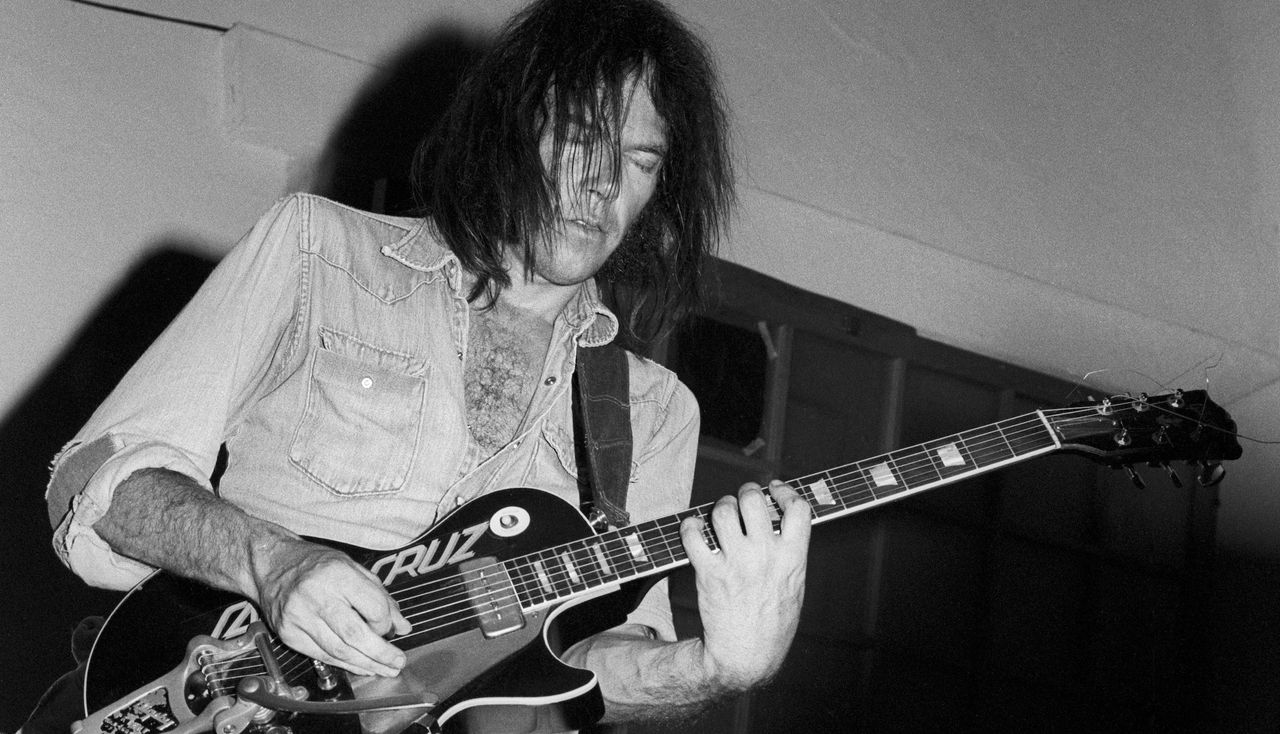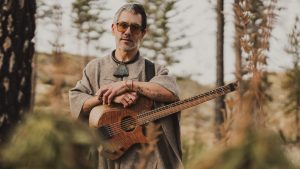
“The first pickup had a bad buzz, so I sent the guitar to a shop. When I went to get it, it was gone. And by that I mean the store was gone”: Neil Young’s Old Black Les Paul is one of rock’s most iconic guitars, and its backstory is appropriately colo
(Image credit: Ed Perlstein/Redferns/Getty Images)
Neil Young’s live rig is famously as ragged and one-of-a-kind as the man himself, and at its center sits Old Black, a modded-to-high-heaven 1953 Gibson Les Paul goldtop.
The mods in question are a “chrome-on-brass” pickguard and back plates, a bridge-position Firebird pickup, and a toggle switch, installed between the two volume and two tone knobs, that acts as a bypass.
By the time the Firebird pickup in particular came into the picture though, in the mid-’70s, Young had already authored proto-grunge, riff-rock classics like Cinnamon Girl, Down by the River, and Ohio, establishing in the process his deep-in-the-red, growling guitar tone.
Of course, much like Young’s discography and creative arc, the story of how the pickup found its way into Old Black – thereby completing the single-cut’s transformation – is a twisty one, with fits, starts, and… vanishing stores?
Neil Young & Crazy Horse – Hey Hey, My My ( Into the Black ) live 1991 HD – YouTube
Watch On
The guitar originally came to Young by way of a trade with former Buffalo Springfield bassist and producer Jim Messina, who forked over the Les Paul and got one of Young’s Gretsch guitars in return.
Asked by Guitar World in 2009 how much of a role it played in the early development of his instantly identifiable guitar sound, Young said, “I don’t know. I really don’t. I mean, that guitar was a different guitar then than it is now. It had a different treble pickup.
“The Firebird pickup went in after the first one got lost, and that happened a few years after we did Everybody Knows [This is Nowhere, Young and Crazy Horse’s 1969 album]. The first pickup had a really bad buzz, and I sent the guitar to a shop to be fixed.”
All the latest guitar news, interviews, lessons, reviews, deals and more, direct to your inbox!
Ok, sure! We’ve all done the same. What could’ve possibly happened next?
“When I went to get it, it was gone,” Young told GW. “And by that I mean the store was gone. The whole place just wasn’t there anymore. So that was the end of that.”
(Image credit: Michael Putland/Getty Images)Thankfully, though, Young did get the guitar back some time later, and – after first trying a Gretsch pickup in the bridge position – landed on the Firebird pickup, a configuration that’s remained ever since.
“Everyone calls [the Firebird pickup] a mini-humbucker, but it’s not,” Young’s longtime guitar tech, Larry Cragg, told GW in 2009. “It’s a humbucker, and it’s very microphonic – you can speak into it. It’s really piercing and high and a big part of his sound.”
Jackson is an Associate Editor at GuitarWorld.com. He’s been writing and editing stories about new gear, technique and guitar-driven music both old and new since 2014, and has also written extensively on the same topics for Guitar Player. Elsewhere, his album reviews and essays have appeared in Louder and Unrecorded. Though open to music of all kinds, his greatest love has always been indie, and everything that falls under its massive umbrella. To that end, you can find him on Twitter crowing about whatever great new guitar band you need to drop everything to hear right now.











